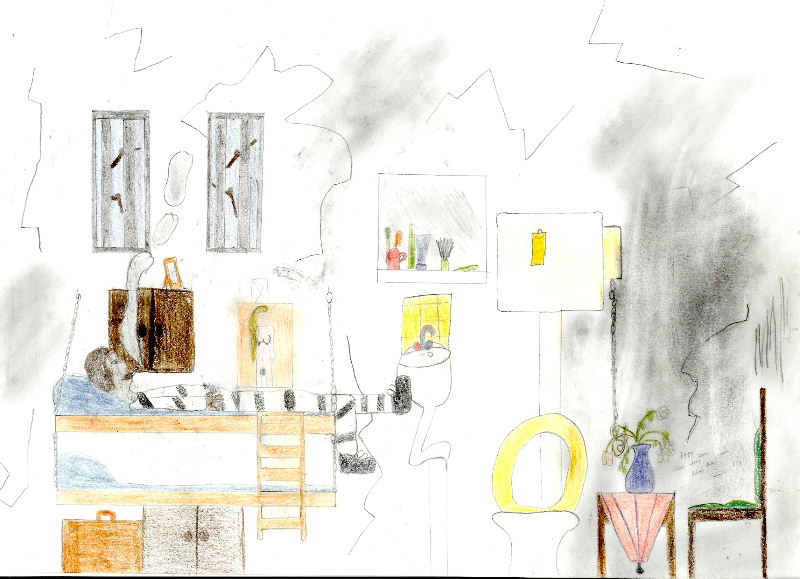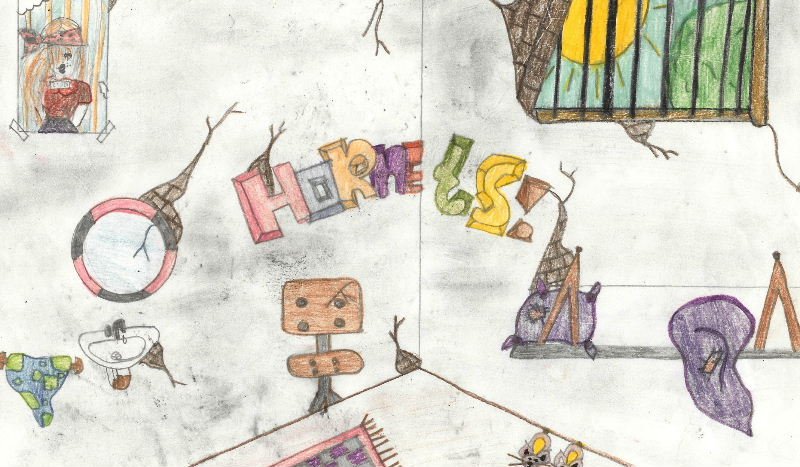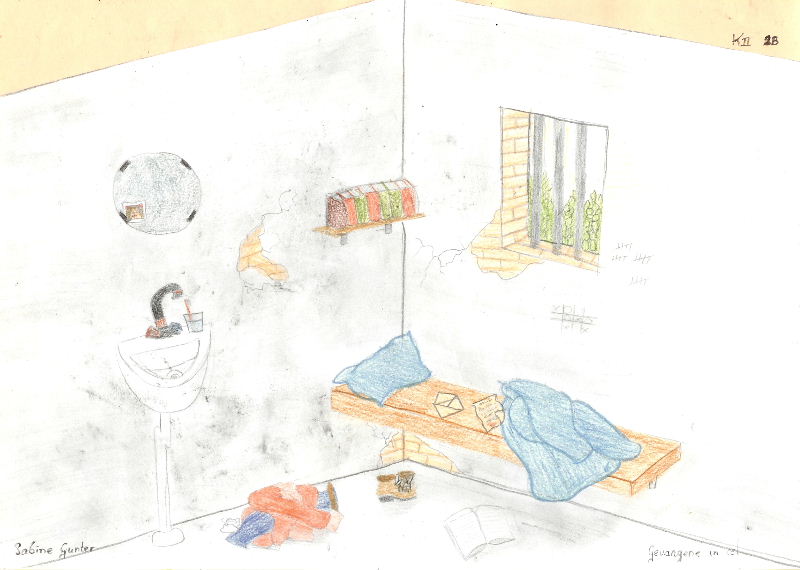Drawings from Period 3: the visible reality
Period 3 spans from 9 to 15 years old. Within this period, a distinction can still be made between the beginning of realism and the pseudo-naturalistic stage.
The beginning of realism:
|
| In this drawing, there's clearly attention to detail. Spatial representation is achieved through the use of multiple ground lines. There's overlapping and cropping. At the rails, there's folding or Egyptian drawn imagery. The boy seems determined to make it clear that these are indeed rails. However, the road is depicted with just a single line. The swans are still quite schematic. Transparency is used in drawing the engineer. |
| An attempt has been made to create a lifelike depiction of the body. Many details are visible, such as fingers and a thumb, a detailed eye. The drawing is flat and without an attempt at spatial representation. |
| In this drawing, an imaginary ground line with a horizon is visible. An attempt has been made to depict the dog as naturally as possible, and the cat is also clearly recognizable as a cat. However, the bird and the squirrel are depicted much more simply. It seems like the boy may have traced the dog and the cat from a reference. The birds in the sky are drawn in a very schematic manner. The color usage is cerebral. |
| This boy makes a decent attempt to depict the view through the basement window realistically. There's clear movement in the legs. Some schemas are still used, and the color usage is cerebral. There are evident cut-offs and overlapping. Multiple ground lines are present. |
The pseudo-realistic stage:
|
| The girl in this drawing uses cropping and overlapping. There are multiple imaginary ground lines and a horizon, represented by the mountains. Additionally, this girl uses increasingly smaller schemas to suggest perspective. The figure is still somewhat schematic, as are the mountains. The color usage is varied, and there's a clear attempt to render the colors as realistically as possible. There are evident shaded areas on the teepees. Multiple shades are visible in the grass. There are also initial attempts to draw shadows inside the teepees. |





